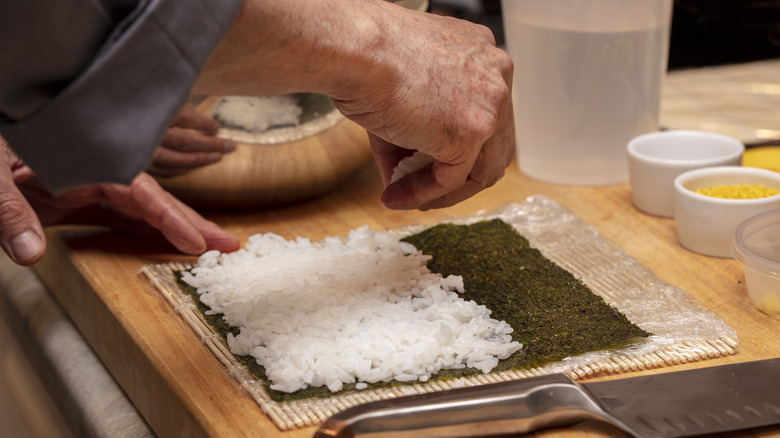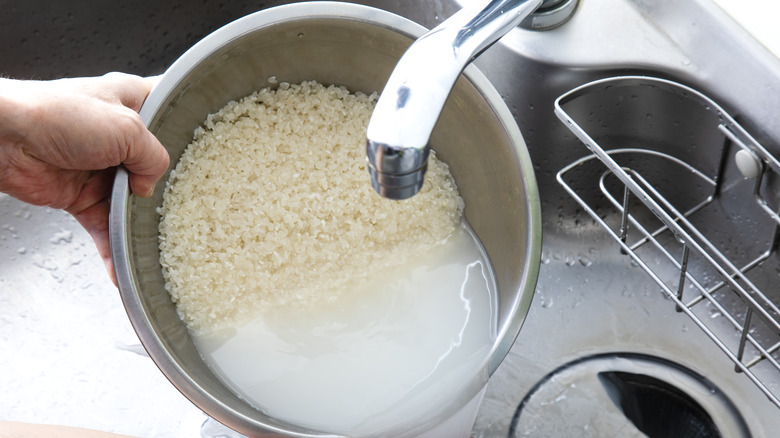The Major Rice Mistake You're Making With Homemade Sushi
Although many people are apprehensive about homemade sushi, from both a safety and quality standpoint, they don't need to be. The right tips and knowing what mistakes to avoid can go a long way to ensuring a good outcome when you make sushi at home, making it an ideal alternative to expensive restaurant outings and questionable grocery store sushi. You may already know that you should only use Japanese short-grain sushi rice as opposed to medium- or long-grain rice varieties, but there's more to it than simply using the right rice. You also need to properly prepare the rice before you cook it. And a major mistake you could be making with your homemade sushi is not rinsing the rice enough.
Rinsing rice is a more crucial step than you might think, but it's especially key for short-grain sushi rice, which contains more starch than most other varieties of rice. It's this abundance of starch that helps the rice stick together, whether in a piece of nigiri or in a maki roll, but too much starch will result in chewy rice and a mushy mess, not exactly what you want for sushi, homemade or otherwise.
How to properly rinse rice for sushi
To properly rinse the sushi rice, add just enough cool water in a bowl to cover the amount of rice you plan to cook, then swirl the rice around with your fingers and hand to rub the starch away. As you do so, the water will turn a milky white color. Pour the starchy water away, then add a bit more fresh water and continue to swirl the rice. Keep repeating this process until the water in the rice bowl remains clear. According to Nobu Matsuhisa, in an exclusive interview with Tasting Table on his foolproof techniques for perfect sushi rice, "The rice is washed at least five to six times before cooking using filtered water."
Once the rice has been rinsed, there's one more step before cooking. Cover the rice with plenty of water and let it sit for at least 10 minutes, or until all the grains of rice are solid white, and no longer have any gray spots. That means that all the rice has absorbed its own weight in water and will now cook evenly. Drain, then cook the rice, and remember to season properly before using the rice in your homemade sushi.

